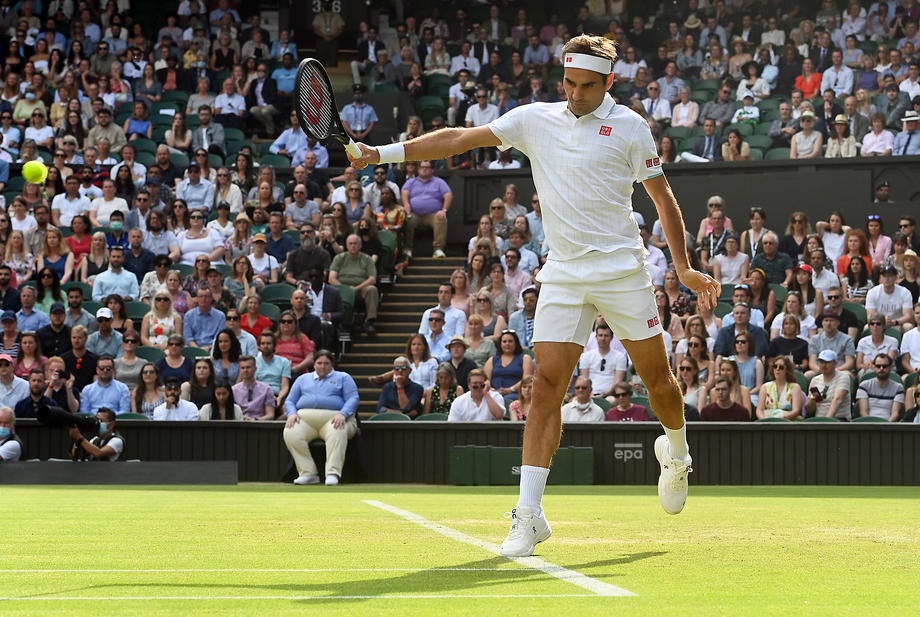- Ken Thomas Broadcasting from Georgia’s Rome Tennis Open
- Solinco Launches All-New Whiteout V2 Racquet
- Stringlet: Serving Up Tennis Inspiration With A Twist
- Davis Cup qualifying to feature Brazil vs. France and Spain vs. Switzerland
- 2025 US Open Expands to Sunday Start
- Tennis Channel To Broadcast U.S. Davis Cup Qualifier vs. Tawain
- Stefanos Tsitsipas Receives Rotterdam Wild Card From Richard Krajicek
- Tien and Basavareddy to Play Delray Beach Open Qualifying
- Australian Open Tennis 2025 Ends with Madison Keys and Jannick Sinner As Winners By Alix Ramsay
- 2025 Australian Open Final Draws
- Jannik Sinner Sweeps Alexander Zverev for Second Straight Australian Open Title
- Ricky’s pick for the Australian Open final: Sinner vs. Zverev
- Australian Open Draws and Order Of Play for Sunday, January 26, 2025
- Madison Keys Upsets Defending Champion Aryna Sabalenka in Australian Open Final Thriller
- Ricky’s pick for the Australian Open final: Sabalenka vs. Keys
Tennis News• Novak Djokovic Beats Carreno Busta At The French Open; The Dead Spider Lives Again
- Updated: October 7, 2020

By Alix Ramsay
For those of you who are regular readers, you may have heard about this theory before. There is something that Novak Djokovic does when he is in trouble that my Australian friends call the “dead spider”.
Djoko is either not 100 per cent physically or he feels less than 100 per cent mentally. He walks on court looking like a dead man limping. Everyone watching senses an upset. More importantly, his opponent senses an upset.
But my Aussie friends liken it to a spider curled up beside his web. The spider looks, to all intents and purposes, dead. The web, however, remains fully active. And when the prey wanders past the spider and into the web, he is toast. Stuck in the predator’s trap, he can do nothing as the spider advances for his meal.
Djoko has been doing this for years. When he did it to Andy Murray in the Australian Open final of 2015, the Scot made it clear what was going on. For two tighter-than-tight sets, they were neck and neck. And then Djokovic did the spaghetti legs (for all Liverpool fans, think Bruce Grobbelaar in the 1984 European Cup final against Roma; for non- Liverpool fans: Google it) and the match changed.

As Djoko seemed to be out on his feet, unable to move properly, Murray let it distract him. He knew what the Serb was doing and kept yelling to his team: “He does this all the time!”. But still it worked. Djoko won his fifth Oz Open trophy.
Back at Roland Garros on Wednesday, he was at it again.
Coming in to the semi-final against the man who had won by a default at the US Open, the world No.1 had everything in place: he had tape down the right side of his neck, he frequently pounded his heavy legs with his racket (and that will hurt in the morning), he needed treatment on his left arm and he called for eyedrops to help him sort out his contact lenses. Short of asking for medicinal quantities of Head and Shoulders to cure sudden-onset and terminal dandruff (the scourge of many a player), there was nothing left to moan about.
By this stage, he was a set down as Carreno Busta absolutely clattered his ground strokes and pounced on Djoko’s lame drop shots. By the start of the second set, it seemed as if the world No.1 would struggle to get through the next four games, much less the next four sets. But that was all it took.

Carreno Busta fell for the dead spider ruse like so many before him. He watched the man and not the ball and the second set disappeared in no time.
At a set all, Djokovic was like Lazarus: fully restored to health. The first serve, the shot that had evaded him in the first set and a bit, reappeared. The ability to move and lunge came back. He was in control for the first time in the match ad there was absolutely nothing Carreno Busta could do about it.
Afterwards, Djokovic was his usual, evasive self. What was wrong? He would not say.
“Look, I had some neck issues and some shoulder issues,” he said reluctantly. “I’ll just say that. I mean, I don’t want to get really too much into it. Obviously, I’m still in the tournament, so I don’t want to reveal too much.
“Few things happened in the warmup. I had to deal with those physical issues coming onto the court. As the match went on, I felt better, didn’t feel as much pain.

“Especially for set and a half he was the better player, dictating the play. I was very neutral. I didn’t have much of energy really happening in my legs or movement or game itself. It took me about set and a half to really get comfortable and start really playing the way I should.”
Carreno Busta is not a man to complain. He had lost to the Serb in three of their four previous meetings – and the only win came after Djokovic was defaulted in New York. He was asked whether he noticed Djokovic having treatment on his arm or if he saw the No.1 endlessly stretching his neck, shoulder and back. Apparently not. But, then, PCB has seen a lot of Djokovic over the years and nothing surprises him.
“Probably the last years he’s always doing this when he has problems on court,” PCB said. “I don’t know, maybe it’s the pressure or something that he needs to do it. But, I mean, he continues playing normal, no? I don’t know if he has pain really or he has mental. Ask him.”

Stefanos Tsitsipas awaits Djokovic in the semi-finals. He is new to the dead spider routine and in five previous matches, he has won twice. Djokovic heaped praise on the 22-year-old Greek No.6. He is, according to Djokovic, a big guy with big weapons and a big game.
“He’s really a complete, all-around player,” Djokovic said. “I think he’s one of the hardest working guys out there.
“I’m hopefully going to be able to feel my best and play my best.”
Back in the locker room, those more experienced than Tsitsipas muttered under their breath: “yeah, and you’d better believe it”.






